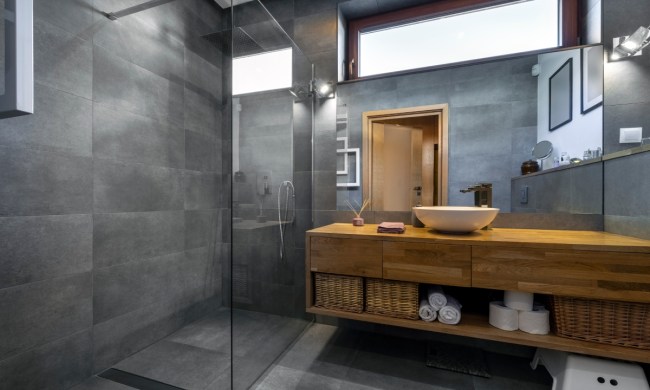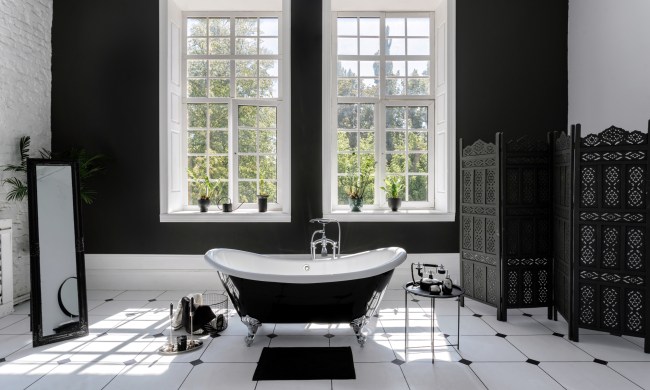Home heating and cooling choices occupy a small but significant part of new construction or renovation. These appliances typically claim about five percent of the total cost of new home construction, but 46 percent of the monthly power bill. An investment in a solar heating and cooling system could pay dividends in reduced power bills for many years.
Interest in renewable energy tech has been on the rise for decades as a way to reduce pollution and lower monthly expenses. Clean, renewable solar heating and cooling systems have become an increasingly significant part of the conversation. If you have been thinking about harnessing free solar energy for your home’s heating and cooling needs, keep reading.

Solar heating and cooling systems cost
Every solar installation is unique, with heating and cooling demand taking into consideration the climate, home size and configuration, type of system, and available sun exposure. Residential backup systems available from home improvement retailers range between $3,000 and $7,000. Average costs of whole-home solar heating and cooling systems run from about $15,000 to $30,000.
Incentives for installing a solar heating and cooling system
Not only are solar heating and cooling systems easier on monthly energy bills and better for the environment, they may also qualify for tax breaks. The best incentive available at the time of publication is a 26 percent federal investment tax credit (ITC). It directly offsets owed taxes and may even come back in the form of a tax refund.
When you file your federal tax returns, the current tax credit gives back 26 percent of the amount you paid for qualified systems placed in service after December 31, 2019, and before January 1, 2023. For systems placed in service after December 31, 2022, and before January 1, 2024, the ITC drops to 22 percent.
Additionally, some states and municipalities offer a variety of tax incentives and rebates for energy-efficient home appliances. It’s worth investigating if you’re thinking about making the switch.
How does solar heating and cooling work?
Solar heating and cooling systems capture sunlight on solar collectors and convert it to usable thermal energy. The captured heat is transferred by means of a fluid (water) or air distribution system to heat or cool the home.
System components are made of common recyclable materials like aluminum, copper, steel, and polymers. Energy storage technology is often built into solar heating and cooling systems so they can function at night and on cloudy days.
Solar heating and cooling system components
- Solar collector
- Heat exchanger
- Distribution system, such as fans, ducts, or insulated water pipes
- Controller system
- Thermal energy storage system, such as a water storage tank
Types of solar heating and cooling systems
Solar heating systems
Solar heating systems use either liquid or air to transfer collected sun energy and heat the home.
Liquid-based solar heating systems circulate heated water or a non-toxic antifreeze solution through a heat exchanger that is connected to a storage tank. The stored water is circulated through the home’s distribution system to heat the home.
Air-based solar heating systems circulate air through an air solar collector, and use fans to distribute the warmed air.
Solar cooling systems
Solar cooling systems use either absorption or desiccant technology to cool the home.
Absorption-based solar cooling systems use liquid solar heat collectors and a process of thermal-chemical absorption to cool the air in much the same way as a traditional refrigerant-based system, only the electric compressor is replaced by the solar-heated water.
Desiccant solar cooling systems move air across a desiccant, such as silica gel, to lower the humidity, making it feel more comfortable. Solar energy powers the desiccant drying process for reuse.

Pros and cons of solar heating and cooling
Is solar heating and cooling right for you?
Solar heating and cooling system pros
- Clean renewable energy
- Zero operating pollution
- Near zero operating costs
- Can be combined with home solar electricity production using PVT technology
- Low maintenance
Solar heating and cooling system cons
- Higher purchase price and installation costs than conventional systems
- Inconsistent heating and cooling
- Storage
- Dependent on home location and orientation
- Installers are not available everywhere
- Manufacturing processes still contribute to pollution
Although it has dropped significantly in the past few years, the upfront cost of solar technology is still higher than conventional tech. But the return on investment happens rather fast. Solar space heating and cooling systems can pay for themselves in as little as three to six years. When combined with domestic hot water and electricity production, the benefits only increase. While solar may not be the right choice for every consumer, it does offer a viable alternative to fossil fuels.



